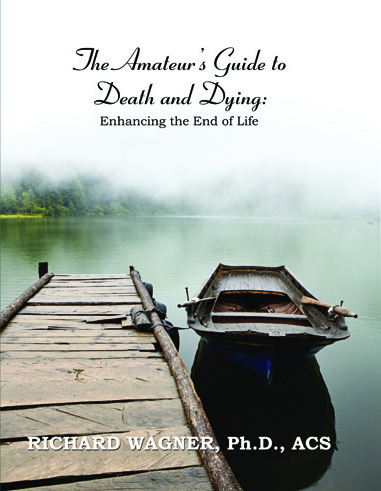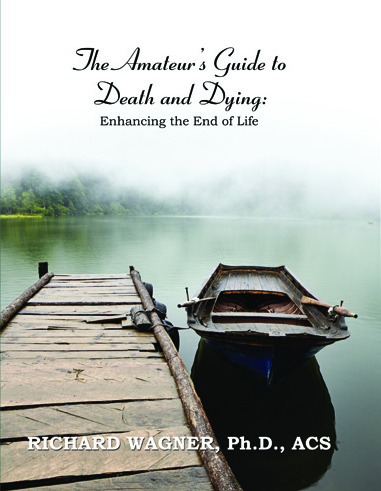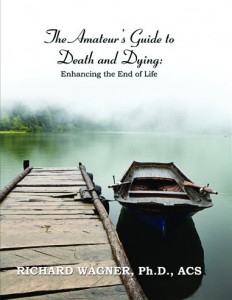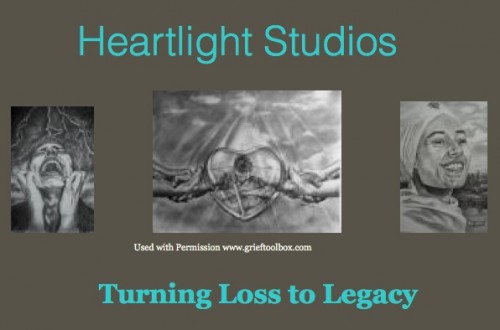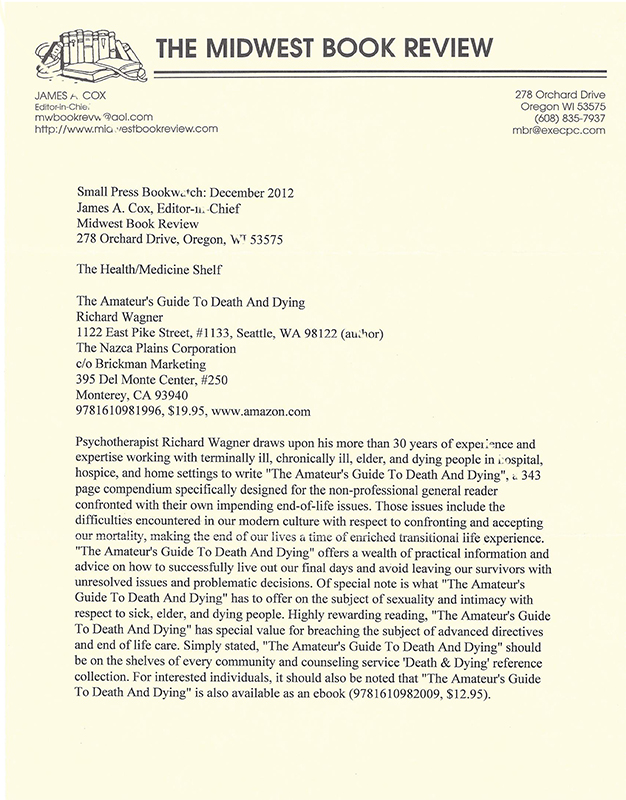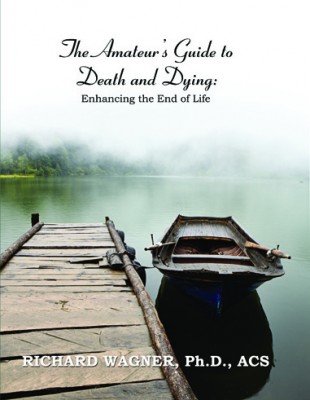I’m proud to announce the posting of an interview with me about my new book — The Amateur’s Guide To Death and Dying; Enhancing the End of Life. The interview is posted on IJ Wood’s site, Conscious Departures.

Click on the Conscious Departures banner above for the full interview.
 Several months ago I became I became acquainted with Richard Wagner Ph.D and had the pleasure to read his book The Amateur’s Guide to Death and Dying. His work with people facing end of life issues is inspired and admire his fearless approach to going into territory most consider taboo and awkward. Richard Wagner has been working with terminally ill, chronically ill, elder and dying people in hospital, hospice, and home settings for over 30 years. He facilitates support groups for care-providers and clinical personnel, and provides grief counseling for survivors both individually and in group settings.
Several months ago I became I became acquainted with Richard Wagner Ph.D and had the pleasure to read his book The Amateur’s Guide to Death and Dying. His work with people facing end of life issues is inspired and admire his fearless approach to going into territory most consider taboo and awkward. Richard Wagner has been working with terminally ill, chronically ill, elder and dying people in hospital, hospice, and home settings for over 30 years. He facilitates support groups for care-providers and clinical personnel, and provides grief counseling for survivors both individually and in group settings.
He founded Paradigm Programs Inc, an innovative nonprofit organization with a mission to be an outreach and resource for terminally ill, chronically ill, elder and dying people. He was honored with the prestigious University of California San Francisco Chancellor’s Award for Public Service in 1999 for his work with sick, elder and dying people.
His book is a valuable contribution to the body of work available for coming to terms with end of life issues and one I wish I had when K was alive. Having been the primary caregiver and the one person who was with K day and night using a tool like this would have been invaluable. There comes a point where a person just doesn’t have the strength to do much, but they still do want to communicate. I could imagine K and I reading it together (me reading it aloud), and doing the exercises. It could have provided a great format for the both of us to have those important and uncomfortable, conversations in an engaging way. At the very least it would have provided us a good platform to work with.
This is not a passive book. Richard Wagner takes an approach that makes the reader part of the story. In it you become one of the participants in his work group along with a number of people coming from different cultural backgrounds dealing with a variety of issues from cancer to old age. You are a participant, not a fly on the wall, and if you allow yourself to enter his world and take the exercises to heart you will find yourself going through a very fulfilling process. For this reason I feel that this book must be approached when you or your loved one has the appropriate energy and mental acuity to take it all in. There are 10 members in the group, and if you intend to follow their contribution to the group it takes some effort.
I was so impressed with Richard’s approach and the experience behind the book that I felt I needed to meet him and do an interview. We met by phone. Here are his responses to my questions:
IJ: In your years as a health professional, what do you consider the biggest lessons you’ve learned about caring for someone with a terminal illness?
RW: I tend to lump health care professionals into two groups — healing and helping. As a psychotherapist, I consider myself as part of the later group — those who help.
The biggest lesson I’ve learned is that precious few of us are able to face our mortality on our own. This tends to complicate an already difficult situation, because few of us who are facing our mortality have people around willing to walk through this with us.
When I started to be present to sick, elder and dying people some 30+ years ago I began to see certain patterns develop. Despite the uniqueness of each death I noticed two things that all these deaths had in common; they were difficult and lonely affairs. Difficult because, in our culture we have a hard time recognizing when things are coming to an end, especially the things we enjoy. This is a problem because being unable to acknowledge the end of something makes saying good-bye and thank you virtually impossible. They were lonely affairs, because those who were dying often felt useless and disconnected. It was like they were dead before they were dead.
IJ: How has this affected you personally?
RW: This had a profound effect on me. Because I soon began to realize that the marginal status our culture assigns to the end of life, with all its fear, anxiety, isolation and anger is inevitably what each of us will inherit in our dying days. I either had to come up with an alternative approach, or I would crash and burn. I saw so many valiant fellow healing and helping professionals burn out; they just couldn’t face their inner turmoil and grief any longer so they had to leave the work they were doing. And I did not want that to happen to me.
I figured there had to be a better way to deal with this fundamental fact of life. So I decided to take a fresh look at my own mortality, because that seemed to be the most likely place to begin if I wanted to help others face their mortality. In time, I became less anxious. The monstrous thing I feared for so long was being transformed. I was able to sit with death and not be afraid. Death was no longer the enemy, she was becoming what St. Francis called her ‘sister death.’ Besides, death links us to the great round of nature. I found that comforting.
When I began to ask the sick, elder and dying people I was working with if they wanted to join me in this endeavor I discovered most were up for the adventure. I mean it was a no-brainer for most. They knew better than I that few opportunities exist for them to connect with others similarly challenged in a purposeful life-affirming way. I was encouraging them to take a lead role in orchestrating their finales; they were no longer expected to be unobtrusive, dependent on the kindness of others and to wait patiently for the curtain to fall.
IJ: What was your goal and inspiration behind writing the book The Amateur’s Guide to Death and Dying?
RW: Let me take you back to the early 1990’s. I was successful in getting some like-minded people together for mortality-oriented support groups. Initially there was some resistance, however, because most of the people who joined my early groups were only familiar with disease-based groups. People with cancer met with other people with cancer if they met with anyone at all; people with HIV only met with other people with HIV if they met with anyone at all. But I was proposing something really radical. I was suggesting that facing one’s mortality had very little to do with a disease process, it had to do with simply being alive. I had to keep reminding them that the thing that connected us was our mortality, not a disease, or aging process.
I figured if our focus is our mortality, we wouldn’t get bogged down with the medical issues we faced as “patients.” This freed us up to find practical solutions to the end-of-life concerns each of us had. And we would be able to receive the support we needed to design our own strategy for successfully navigating our final life passage.
By the mid 1990’s I had enough of these groups under my belt to create a pilot program for a nonprofit organization I had founded, PARADIGM; Enhancing Life Near Death. I called it the Access Program. It was seminar/support group hybrid, a two-hour a week commitment for ten weeks.
With the help of a handful of experts in their field, doctors, clergy, nurses, therapists and lawyers, participants were able to face their mortality head on. They gained perspective on numerous issues related to modern dying … whether it’s filling out a durable power of attorney form, answering provocative questions about sexuality and intimacy, completing a death anxiety survey or personally designing a unique end-of-life plan … they were totally involved and engaged. And this had a startlingly positive effect on the group members.
After a few years of successfully doing these groups I realized that I was reaching only a very tiny percentage of the people who might benefit from such a program. Even when I was doing two groups simultaneously, one in the afternoon and one in the evening, I wasn’t able to keep up with the demand. The only solution was to write a book.
I figured that if I could simulate participation in an actual PARADIGM, group in workbook form, my potential outreach would be enormous.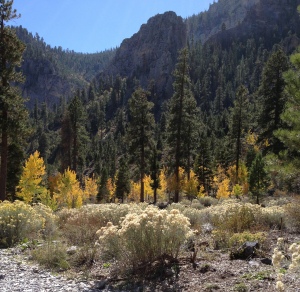
IJ: Who are you gearing this book towards?
RW: The short answer is — all those mortals out there.
My workbook is primarily for those currently facing their mortality — chronically, terminally ill, elder and dying people. But concerned family and friends, healing and helping professionals, lawyers, clergy, teachers, students, and those grieving a death will all benefit from joining in. Because, as we all know, none of us is getting out of here alive.”
IJ: The way you designed the book is unique. What was your thought process for coming up with this idea?
RW: As I mentioned, it was imperative that The Amateur’s Guide To Death And Dying simulate participation in an actual PARADIGM, group. Just writing a book about my experiences or my philosophy about living and dying simply wouldn’t cut it. There were already a lot of those kinds of books in the marketplace.
If I was going to do this, it was going to have to be something really unique. It was going to have to fundamentally change the conversation. It was going to have to give those who were without a voice a chance to speak out about their concerns. And it would have to advocate for the holistic self-determination for those facing the end of their life.
The most exceptional aspect of The Amateur’s Guide is its format. Readers become part of an on-the-page support group. Ten diverse fictional characters, representing a broad spectrum of age, race, and life situations inspire strong reader identification and provide essential role models for enhancing life near death. This unique presentation exposes the reader to a myriad of life situations and moral dilemmas that arise as one faces his or her mortality head on.
Besides the group process, six presenters, each an expert in his/her field, offer timely advice designed to help the reader make the end of life less an intimidating process and more a rich, poignant transition.
IJ: What are you wanting people to take away from the process you put them through?
RW: I hope the reader will be able to celebrate our shared belief that living well and dying well are one and the same thing. I hope the reader will find his/her voice as well as the confidence he/she needs to engage others in their end of live conversation.
I know that conscious dying has become kind of a buzzword these days and maybe it’s even lost some of its original meaning. I think conscious dying means learning how to relinquish control before circumstances wrestle it away from us. In many cultures detachment is an art form. In many religious traditions detachment is a virtue. Perhaps there is something here for each of us to consider. Ultimate control has little or nothing to do with being able to manipulate externals, which I’m sorry to say, also includes our bodies. Ultimate control is about inner peace and wellbeing. And these are not dependent on being “well” or being “whole”.
And just to be clear, I’m not talking about adjusting deathbed pillows so that dying people can strike heroic poses for the edification of onlookers. I’m talking about achieving a good death in the context of real dying—with all its unpredictability, disfigurement, pain, and sorrow.
IJ:What sort of reactions have you had so far with the book?
It’s all been exceptionally positive so far, even the reviews I’ve been getting from my end of life professional peers. This kind of surprised me at first, because the book is such a radical departure from everything else in the genre. But everyone seems to be enjoying the refreshingly new take on this age-old problem. They love the interactive aspect of the workbook. People are telling me that the fun, engaging yet poignant style of the book is helping them work through their own issues.
IJ: For further support, after reading the book what do you suggest people can do?
RW: Here’s the thing. If you read through the whole book, if you participate in all the discussions, if you do all the homework and exercises you will, at the end of the book, be prepared for and have the confidence to discuss all your end of life concerns with the significant others in your life.
You will have everything you need to break open a discussion with your lawyer about estate planning and advanced directives. You’ll have everything you need to address your intimacy needs with your intimate partner. You will have everything you need to open a discussion with your spiritual advisor about your faith. You will have everything you need to have a frank discussion with your physician about palliative care, comfort care and your thoughts about assisted dying.
The Amateur’s Guide To Death And Dying can be used to start your own group of people who want to face their mortality; even if that group is made up of just one other person. You can see the ripple effect this will have, can’t you? I hope the reader will take every opportunity to share what s/he learned with all those who might benefit, because, as you know, there are a whole lot of amateurs out there.
If you are interested in purchasing the book here’s the link: The Amateur’s Guide to Death and Dying
Complete Article HERE!
